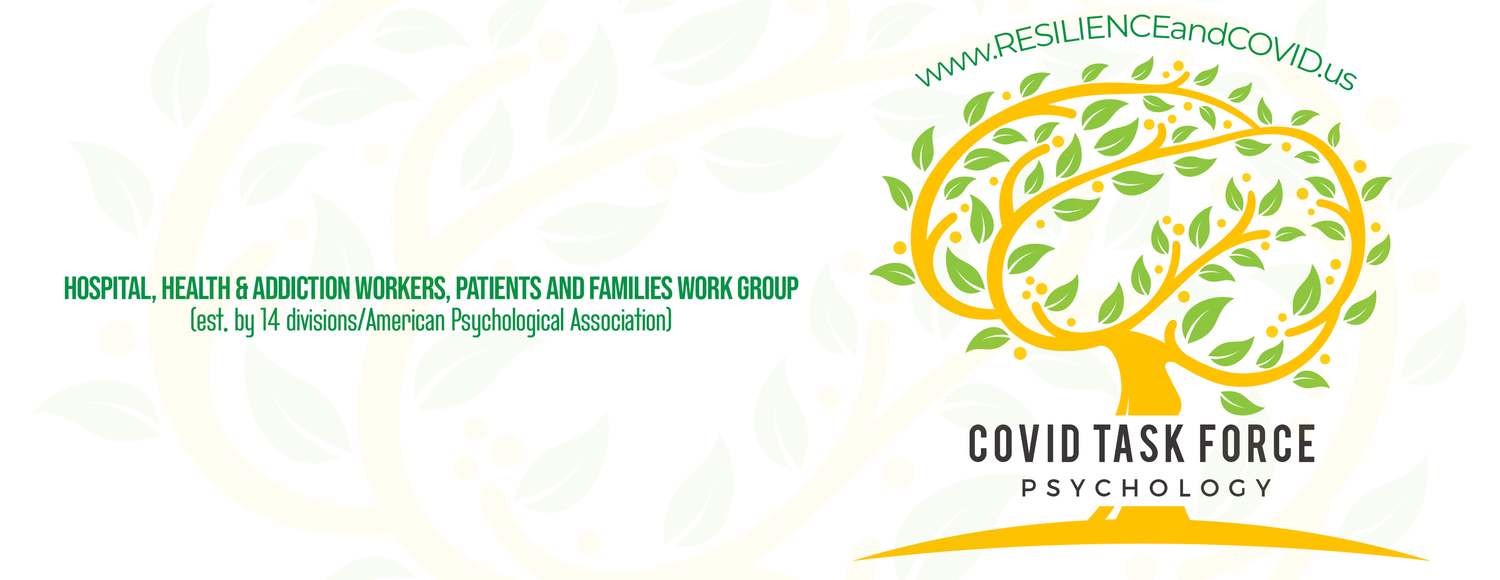Sustaining Hope in Pediatric Care During COVID-19
How parents and children can foster coping.
The COVID-19 pandemic has left us uncertain about the future. With every step we take, we wonder, will we be exposed? Will we expose others and put them in danger? In short, we may feel a lack of control over our health and future.
Children often lack control over their life. Now imagine a child who is diagnosed with or is fighting a serious medical illness, in the midst of a pandemic. How is their sense of control now? We would imagine minimal—can hope change that?
When a child is diagnosed with a medical condition, so is their family. Oftentimes, the child experiences physical, emotional, and social changes. Simultaneously, the child and family together experience fear and may feel overwhelmed (Freire et al., 2015). During the pandemic, the level of anxiety and stress is exacerbated. The timeline for children returning to school and seeing friends has been prolonged and uncertain. Without hope, these feelings might persist, but with hope—the possibilities are endless.
Hope
“Hope is the anticipation of something positive, while at the same time accepting the inevitable” (van der Geest et al., 2014, p. 402). People who have hope are able to generate multiple, alternative pathways when facing obstacles to achieve (Snyder, 2005). The more motivated a person is in pursuing hope, the more empowered, self-reflective, and self-compassionate they feel. However, when faced with the unpredictability of an illness during COVID-19, it can be difficult to anticipate the future and to maintain hope.
Source: Anna Shvets, Pexels
How then does one find hope in a seemingly hopeless situation? As clinicians, it is important to convey to our clients they have control over how they deal with the pandemic. Recognizing that one still has choices despite being within a limited context promotes a sense of control and hope.
Hope helps children and their families face the reality of medical conditions as an internal source of strength to draw from in times of crisis (Freire et al., 2015). Hope enables us to find meaning in life, increase optimism, and improve self-esteem.
Parents with more hope are better at problem-solving (Snyder et al., 2005). Additionally, with hope, the child and family can better adapt and adhere to treatment, promoting a better quality of life. Thus, hope is essential to well-being for the child and the family, and can be a protective factor against loss of control they may experience during the pandemic.
Research has found that religion and spirituality contribute to people’s feelings of hopefulness, sense of purpose, meaning in life, and an overall sense of optimism (Koenig, 2012). Ferrell and colleagues (2020), who are palliative care providers, concluded that “spiritual care is not a luxury, it is a necessity…” However, during a time of unpredictability and chaos, spiritual distress is inevitable, and individuals can encounter emotional fatigue when attempting to maintain their faith and spirituality (Ferrell et al., 2020).
article continues after advertisement
When faced with their child’s life-threatening illness, parents are also confronted with feelings of vulnerability and the fragility of life. Activities and locations that were once taken for granted (e.g., houses of worship) and made it easy to access spiritual activities, are no longer accessible. These experiences may cause parents to question their faith, spiritual affiliation, or sense of purpose in life. Families who are able to maintain a sense of hope can find new meaning and new ways to express their spirituality.
As health care workers, it is our job to increase, foster, and instill hope in the pediatric patient and their family.
Below are some suggestions on how to encourage and strengthen hope.
Ways to Promote Hope in Pediatric Patients
Discuss events occurring in the family outside of the hospital.
Encourage the child to imagine how they will be in three or six months from now.
Identify how the child can grow and change for the better (e.g., see life from a new perspective, not take things for granted, cherish relationships, and pursue dreams and aspirations).
Ask the child where they find their strength (Remen, 2000). This can be done through exploring their favorite characters/superheroes.
Build self-efficacy and confidence by exploring ways to regain some control by doing what he/she can do to promote recovery (e.g., working on an art project, solving a puzzle)
Invite conversation about spirituality and partake in spiritual activity.
Ways to Promote Hope in the Family of Pediatric Patients
Explore sources of spirituality, which helps family members create meaning and comfort and aid in decision-making (Robinson et al., 2006; Hexem et al., 2011).
Imagine what each member of the family can do post-recovery.
Directly discuss the importance of hope with the child and family members—some things they may hope for are quality time together, or a reduced level of pain.
Provide honest communication about the child’s medical condition.
Retain important qualities that foster hope within ourselves and others, including joy, humor, honesty, curiosity, and courage (Buechler, 2004).
Remind the child and family that they are a team—and can lean on one another along the way. Use “we” statements.
Pray for inner strength and healing.
Focus on what you and your child can do rather than what you cannot because overcoming a feeling of helplessness can help cultivate hope.
Engage in pathways thinking: “We will find a way to get this done."
article continues after advertisement
Concluding Thoughts
The uncertainty of the pandemic has made it difficult to feel in control, especially for pediatric clients with medical conditions and their families. Hope plays a crucial role in regaining a sense of control, enhancing quality of life, and promoting recovery and healing.
“Hope is a choice and a gift one gives to another” (Burger, 2018).
Read article on Psychology Today: https://www.psychologytoday.com/us/blog/psychological-trauma-coping-and-resilience/202103/sustaining-hope-in-pediatric-care-during
References
Burger, A. (2018). Witness: Lessons from Elie Wiesel’s classroom. Houghton Mifflin Harcourt Publishing.
Buechler, S. (2004). Values: Emotions that guide psychoanalytic treatment. The Analytic Press.
Ferrell, B. R., Handzo, G., Picchi, T., Puchalski, C., & Rosa, W. E. (2020). The urgency of spiritual care: COVID-19 and the critical need for whole-person palliation. Journal of Pain and Symptom Management, 60(3), e7-e11. https://doi.org/10.1016/j.jpainsymman.2020.06.034
Freire, Á. M., Braga, H. A., Braga, A. A., & Neto, M. L. R. (2015). Hope and pediatric cancer. International Archives of Medicine, 8. http:/dx.doi.org/10.3823/1660
Hexem, K. R., Mollen, C. J., Carroll, K., Lanctot, D. A., & Feudtner, C. (2011). How parents of children receiving pediatric palliative care use religion, spirituality, or life philosophy in tough times. Journal of Palliative Medicine, 14(1), 39-44. http://doi.org/10.1089/jpm2010.0256
Koenig, H. G. (2012). Religion, spirituality, and health: The research and clinical implications. International Scholarly Research Notices, 2012. http://doi.org/10.5402/2012/278730
Remen, R. N. (2000). My grandfather’s blessings: Stories of strength, refuge, and belonging. Riverhead Books.
Robinson, M. R., Thiel, M. M., Backus, M. M., & Meyer, E. C. (2006). Matters of spirituality at end of life in the pediatric intensive care unit. Pediatrics, 118(3), e719-e729. https://doi.org/10.1542/peds.2005-2298
Snyder, C. R. (2005). Teaching: The lessons of hope. Journal of Social & Clinical Psychology, 24(1), 72-84. http://doi.org/10.1521/jscp.24.1.72.59169.
van der Geest, I. M. M., van den Heuvel-Eibrink, M. M., Falkenburg, Michiels, E. M. C…..& Darlington, A. S., E. (2014). Parents’ faith and hope during the pediatric palliative phase and the association with long-term parental adjustment. Journal of Palliative Medicine, 18, 402-407. http://doi.org/10.108/jpm.201.0287

